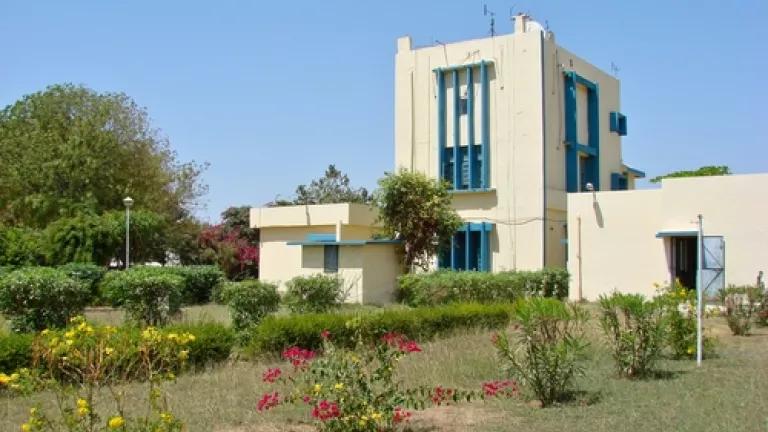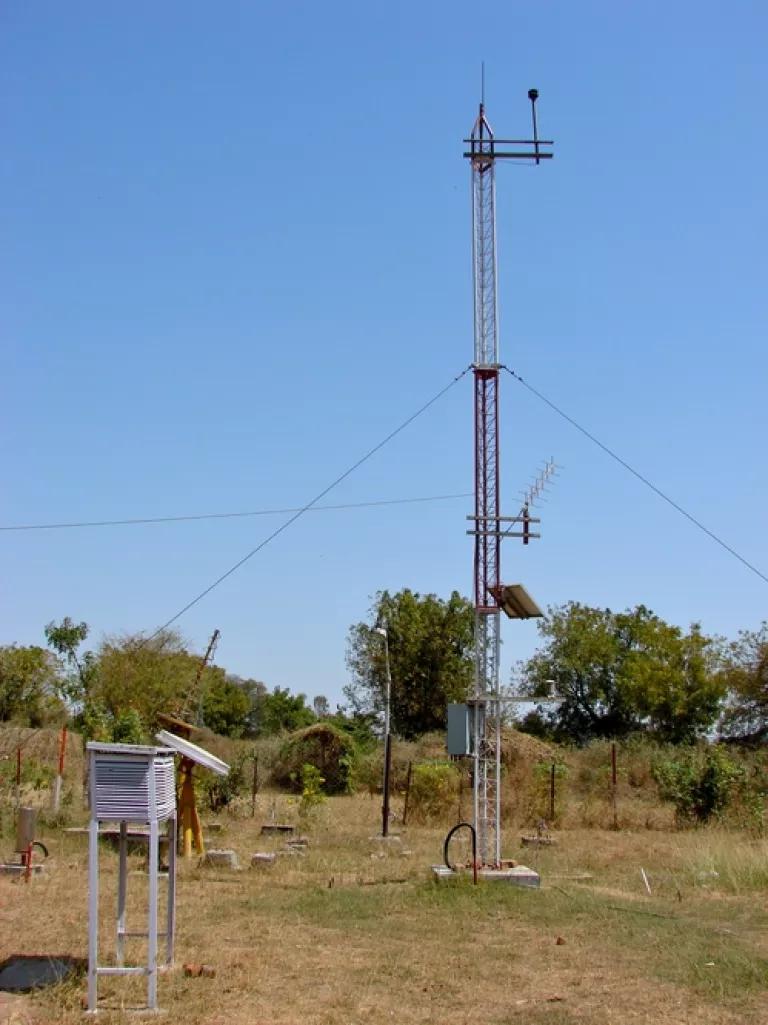Weathering Extreme Heat in Ahmedabad, India: Protecting Residents from Increasing Temperatures

Co-authored with Dr. Gulrez Shah Azhar (Indian Institute of Public Health, Gandhinagar)
Last month, as a part of our climate adaptation work in Ahmedabad, we had the opportunity to visit Ahmedabad’s Meteorological Centre (Met Department) along with our colleagues at NRDC's India initiative, the Indian Institute of Public Health (IIPH), and Mount Sinai School of Medicine. The Met Department plays an important role in the innovative heat health adaptation efforts led by the Ahmedabad Municipal Corporation (AMC) and supported by NRDC and IIPH. A vulnerability assessment is currently being conducted to inform the creation of an early warning system that aims to protect local residents during dangerous weather events. As the first local agency to know when a heat wave is developing, it is vital that the Met Department collaborate with the AMC to improve the city’s internal communication in preparation of extreme weather events and to site additional weather gauges throughout the city.
Located next to the airport on the outskirts of the city, the Met Department currently has the sole weather gauge in this growing district of 7.2 million people. As we toured the Met Department’s impressive headquarters with its director, Dr. Kamaljit Ray, the difference in temperature from the city center was palpable. During a hot week in March (even by Ahmedabad’s standards), with temperatures exceeding 97°F (36°C), we actually felt cool breezes while standing next to the weather gauge – which is located in the middle of an open, grassy field, far removed from the city’s dense, concrete core.
Weather gauge site behind Met Department, Ahmedabad (Photo credit: NRDC)
Dr. Ray explained that the city’s only weather gauge is intentionally sited in ideal conditions to provide the most accurate temperature reading possible. By removing the contributing causes of urban heat island effect, however, this location cannot account for the increased temperatures experienced throughout more built-up areas of the city. The urban core of Ahmedabad can be much warmer than the temperature gauge’s measurement due to heat trapping-materials like concrete and black tar roofs, and heat-creating activity like construction and car traffic, making air and surface temperatures much higher than in surrounding areas. The relative lack of parks and green space in Ahmedabad exacerbates the urban heat island effect as well.
NRDC colleague Dr. Radhika Khosla highlighted the causes and consequences of urban heat island effect and how to combat it during our heat health workshop with local health care professionals that same week in Ahmedabad, and in a subsequent blog post.
In order to provide the actual temperature in different neighborhoods of this expanding city, the AMC is planning to install six new weather gauges throughout Ahmedabad. The AMC and Met Department are currently determining the best sites for these additional temperature gauges. NRDC and IIPH are supporting these efforts to move forward with installation, which is an important part of the city’s development of an effective heat health early warning system.

Automatic weather gauge (right) and manual weather gauge (left) at Met Department, Ahmedabad (Photo credit: NRDC)
Another vital part of Ahmedabad’s efforts to build local resilience to extreme heat is improving internal communication channels between municipal agencies when heat waves and other extreme weather events are forecasted. During the heat health workshop, Dr. Ray described the Met Department’s current process to inform the municipal government of extremely hot temperatures or forecasted heat waves – through a bulletin that the AMC pays a subscription for. Many health care providers attending the workshop said that they do not currently subscribe and receive this bulletin. In the U.S., it's easy to take for granted how widely available the daily temperature is – it's posted outside most banks.
As our newly released report “Climate Change and Health Preparedness in India: Protecting Local Communities in Ahmedabad, Gujarat from Extreme Heat” recommends, a systematic method for the Met Department to communicate such dangerous conditions directly to the AMC and to local hospitals should be implemented. Widespread communication of the daily high temperature and impending heat waves (such as through an email blast or group text message) would efficiently notify local decision-makers and health care providers. The government can then warn the local population ahead of extreme heat conditions through communication channels such as newspapers, TV, or radio and offer tips for keeping cool, while hospitals can prepare for heat-related illnesses and emergencies.
IIPH and NRDC are working to streamline this communication process between the Met Department, AMC, and local hospitals as an integral part of an early warning system, in addition to siting additional weather gauges throughout the city. Disaster readiness efforts like this program are highlighted as a “critical issue” requiring priority attention during the upcoming Rio+20 United Nations Conference on Sustainable Development. Identifying real action on the local level to reduce vulnerability to the effects of climate change is a necessary step in developing more “disaster-resilient societies.” This climate adaptation project in Ahmedabad is a great example of immediate local action steps to prepare for rising temperatures caused by climate change, saving lives during future heat waves.
